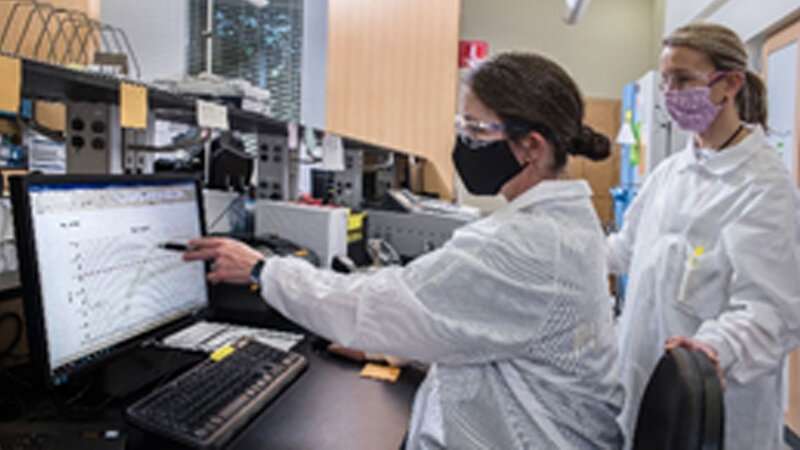Does prolonged COVID-19 detection identify people who are infectious long term?

Repeated testing for SARS-CoV-2, the virus that causes COVID-19, has become common practice during the ongoing pandemic, especially when there is a strong suspicion that a person is infected with, or has been exposed to, the pathogen. Molecular diagnostics are the standard means for detecting the presence of SARS-CoV-2 genetic material (RNA), with negative assays from two consecutively collected respiratory specimens more than 24 hours apart and no symptoms being the benchmark for when a patient can end quarantine and return to normal activities.
However, recent research has shown that while SARS-CoV-2 RNA can be detectable with molecular testing for weeks after the onset of symptoms, it doesn’t necessarily denote the presence of infectious virus particles. In a medical records study looking at results from nearly 30,000 COVID-19 tests over a two-month period, a team led by researchers at Johns Hopkins Medicine and the Johns Hopkins Bloomberg School of Public Health gained significant insight into when virus detection also may indicate contagiousness.
The findings were published online Oct. 27 in the journal Clinical Infectious Diseases.
From March 11 to May 11, 2020, the researchers evaluated the results of repeated polymerase chain reaction (PCR) diagnostic tests for SARS-CoV-2 RNA in 29,686 nasopharyngeal swabs. The PCR assay is very specific and detects the viral RNA by accumulation of a fluorescent signal. The number of times it takes to get a positive signal is called the cycle threshold (Ct), with a low Ct score indicating a large amount of SARS-CoV-2 RNA and a high one just the opposite.
“We also placed a portion of the specimens in cell cultures to see whether or not live virus particles would grow,” says Heba Mostafa, M.B.B.Ch., Ph.D., assistant professor of pathology at the Johns Hopkins University School of Medicine and co-senior author of the study. “In that way, we could compare the Ct values with actual virus recovery in the lab to see when detected virus also was infectious virus.”
The researchers found that the average Ct value associated with cell culture growth of SARS-CoV-2 was 18.8. They also observed viral growth from specimens collected up to 20 days after the first positive result, mostly in patients who were symptomatic for COVID-19 at the time of specimen sampling. Sequencing of the entire genome from RNAs collected in the first and subsequent tests provided evidence that the same virus was seen throughout. Positive tests following negative ones had Ct values higher than 29.5 and were not associated with observed virus growth in culture.
“Our findings support the theory that low Ct values in SARS-CoV-2 diagnostic tests are associated with recoverable virus, and that RNA detection in repeated tests may indicate someone who continues to be infectious with persistent symptoms,” Mostafa says. “However, additional studies are needed to truly determine if Ct values and cell cultures can be used together to make clinical decisions, develop diagnostic strategies and identify those most likely to spread SARS-CoV-2.”
Source: Read Full Article


